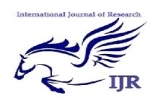
“Long years ago we made a tryst with destiny, and now the time comes when we shall redeem our pledge, not wholly or in full measure, but very substantially. At the stroke of the midnight hour, when the world sleeps, India will awake to life and freedom.”
– Pandit Jawaharlal Nehru, Tryst with Destiny
15 August 1947, a day immortalised as the first independence day of India. This was the very day we gained our independence after almost 200 hundred years of British oppression. The path to independence was not an easy one. It cost us millions of lives, and years of bloodshed to regain something which shouldn’t have been taken from us in the first place. The sacrifices of those who fought for our noble land are honoured and remembered, as we celebrate the 74th Indian Independence Day in 2020. In these past 73 years of freedom, a lot has changed as we have struggled to find our own identity and fix the damages done to us.
Let us look back to what was happening 73 years ago. On 20 February 1947, it was announced by the British Prime Minister Clement Attlee that their government would grant full self-governance to British India by June 1948 at the latest. This was a result of the realisation by the labour party that due to the exhaustion of their resources by the Second World War and lack of international support, they could no longer control restless India. Yet, the day of independence was not all pretty. Communal riots, rampage and bloodshed on both sides of the border led to the loss of between 250,000 to 1,000,000 lives. Amidst all this, the first Prime Minister of independent India, Pandit Jawaharlal Nehru delivered his famous speech, Tryst With Destiny, to commemorate our independence. This speech is considered one of the greatest speeches of the 20th century.
It is an undeniable fact that in the past 73 years we have made a lot of progress. If we look at the economy, we can see that the standards of living and income levels have grown tremendously. The gross domestic product (GDP) increased from Rs 2,939 billion during 1950-51 to an estimated Rs 1,40,776 billion in 2018-19. At the same time, the income of the average Indian worker has gone up to Rs 92,565 during 2018-19 from just around Rs 7,513 during 1950-51. In 1991, the economic liberalisation of our economic policies was initiated, to make the economy more market- and service-oriented, and expanding the role of private and foreign investment. Our economy is one of the fastest-growing economies of the world. Literacy rates have increased significantly, from 18.3% during the 1950s to 73% in 2011. So much more has been done, which makes one’s chest swell with pride.
Although it is pleasing to see the progress which has been made, our country is not perfect. People are still being discriminated against. Colourism in India which has been fuelled due to events under British colonial rule, where British officials consistently demeaned dark-skinned Indians and favoured light-skinned Indians for jobs is still prevalent. Even though our economy is growing fast, the growth in India is not inclusive enough. The rich are getting richer, while the poor suffer. India is also not very safe for women due to the increasing number of assaults against women. Sexist practices like dowry and female foeticide are still happening in the remote areas of the country, even though they have been banned. The number of lynching cases has also grown up, which is incredibly saddening.
Nobody likes to look at the negatives, yet we cannot ignore the problems with the system. An Indian citizen has to address these problems and work for the betterment of their country.
This independence day, we stand together for our country, and celebrate and salute the brave and the fearless for the sacrifices made by them to help us achieve our freedom. Jai Hind!

